Bilbao: an Historic Past and a Gleaming Future
Having enjoyed our recent ferry crossing to charming Amsterdam, Brian and I were looking forward to sailing to Bilbao, the historic capital of Spain's Basque region.
We had paid a little more for our cabin this time round and certainly noticed the difference. The food on-board was good and the bilingual cabin crew seemed to take care of everyone.
After a calm night traversing the Bay of Biscay, we arrived in the Port of Bilbao early in the morning. We took a taxi to the nearest Metro station – Santurtzi – from where we travelled into the heart of the city.
Brian was impressed by the city's futuristic Metro system, designed by British architects Norman Foster and Partners as part of this old maritime city's highly successful regeneration. It opened in 1995 but, as Brian was keen to point out, still looked shiny and new.
We emerged from the Metro via a slinky-like tunnel into the circular Plaza Moyúa, where a busy roundabout encircled a large public area laid out with colourful flowerbeds.
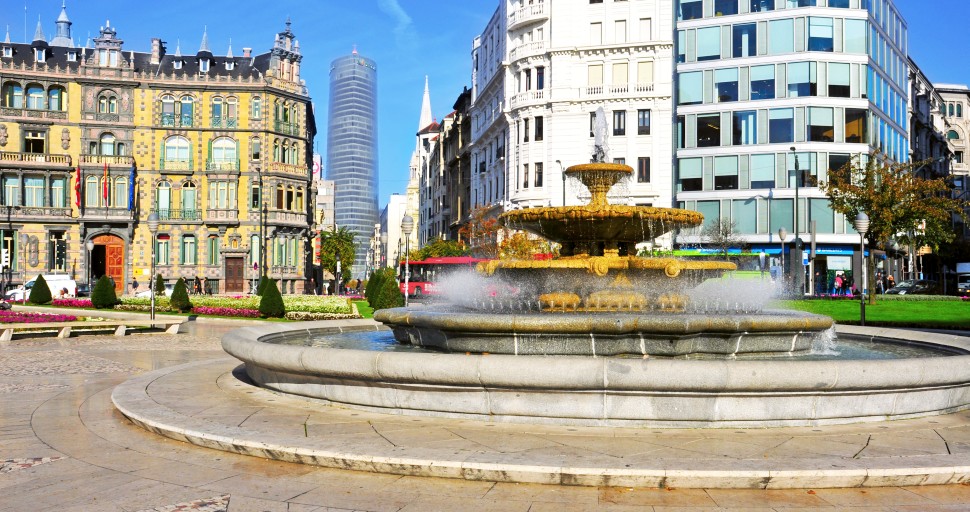 Plaza Moyúa, Bilbao, Spain (nito/Bigstock.com)
Plaza Moyúa, Bilbao, Spain (nito/Bigstock.com)
Despite sleeping well on the ferry we were both keen to find a good Spanish coffee. As with our previous trips to Spain we were not disappointed. We soon found a dark, narrow bar. An old man glanced up from his newspaper. If this had been ten years before, a curl of cigarette smoke may well have wafted up to the ceiling from a drooping Ducados – but smoking in public spaces has been banned here since 2011 and there wasn't a Ducados in sight. A Basque radio station droned in the background, speaking perhaps of the latest municipal intrigue or Atletico Bilbao's most recent La Liga encounter.
The smiling woman behind the bar exhibited great patience with our poor Spanish. Brian was concerned that we should have learned a few words of Basque before arriving, but she wasn't offended by our pidgin Castilian. Along with our perfectly brewed coffee we managed to order a slice of tortilla each. Not to be confused with a corn chip, this treat is a delicious potato and onion omelette attached to a piece of bread and an olive by way of a cocktail stick. We perched ourselves at the bar and enjoyed this tasty tapas – known as ‘pinxo' in Basque. Sipping coffee we leafed through our guidebook.
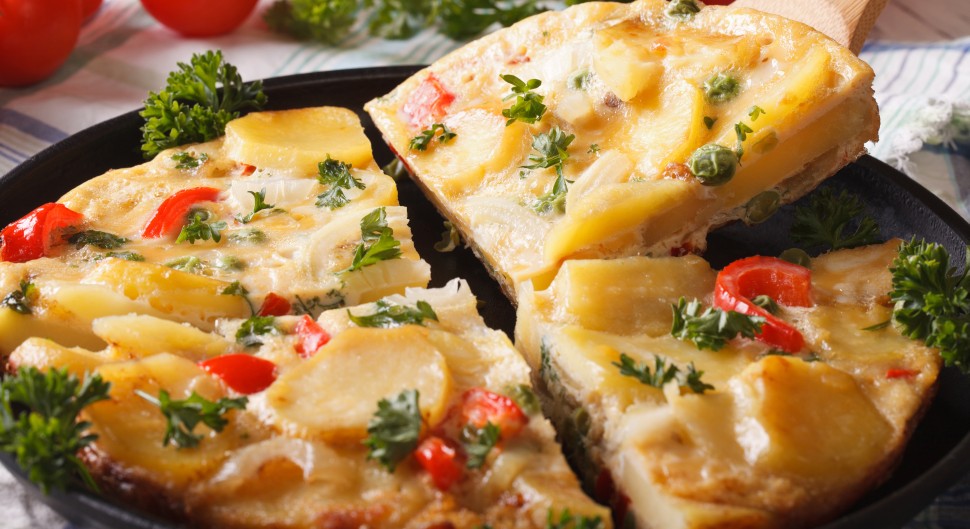
The Guggenheim
Energised by caffeine, sugar and carbohydrates, we moved out into the fresh, bright light of Bilbao, then walked to the centrepiece of Bilbao's regeneration: the Guggenheim.
It's hard not to be impressed by this shimmering titanium behemoth. A seemingly random arrangement of curves, ship-shapes and sails, it catches the light wonderfully. Circum-ambulating the Frank Gerhy-designed museum, we wondered if its contents could possibly match its exterior.
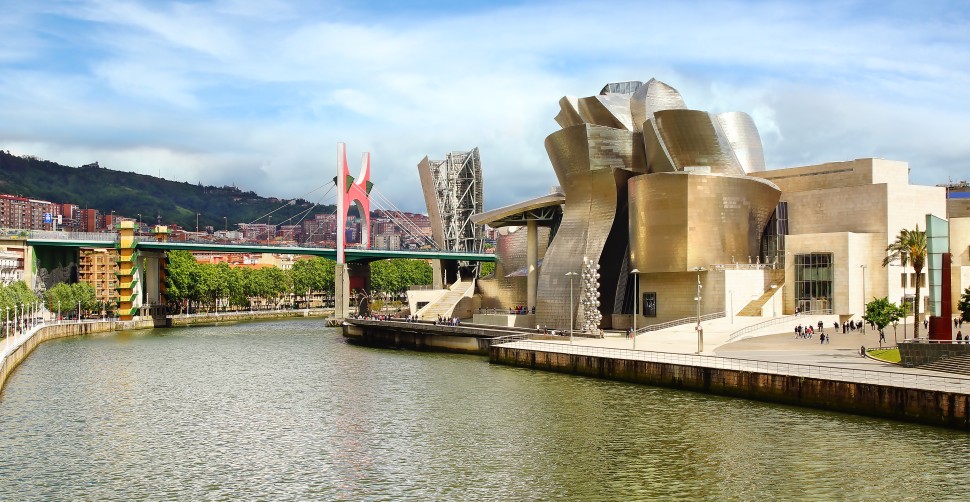 Guggenheim Museum, Bilbao, Spain (plotnikov/Bigstock.com)
Guggenheim Museum, Bilbao, Spain (plotnikov/Bigstock.com)
Before we ventured inside we peered up the huge 'Puppy' – a Highland terrier covered in begonias. It gave us a smile. This kitschy exhibit – which had been in situ since 1997 when the museum opened, despite having meant to be a temporary feature – countered the rather sinister Maman. Louise Bourgeois crafted this immense spider-like sculpture as a tribute to her mother who was a weaver; an odd combination of predator and protector.
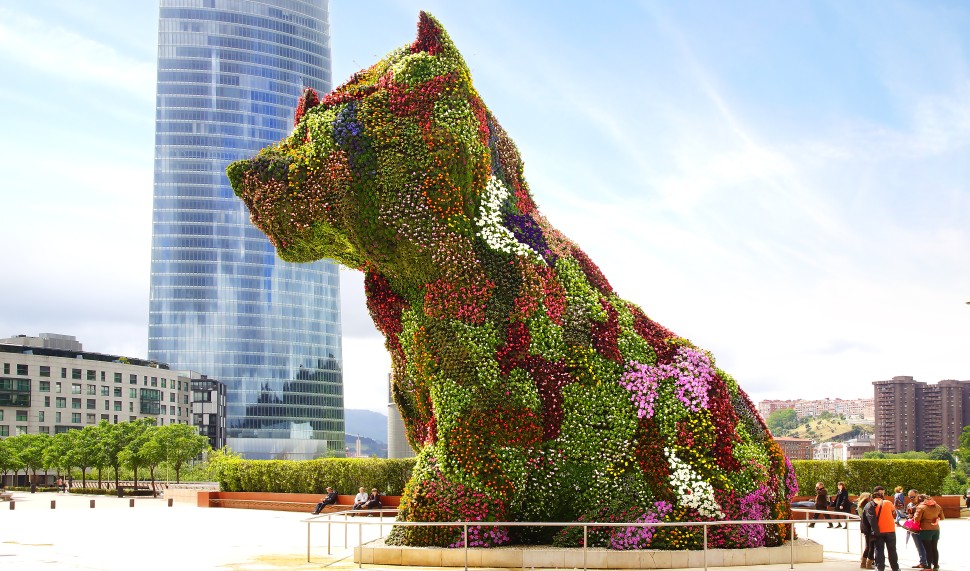 "Puppy", Guggenheim Museum, Bilbao, Spain (plotnikov/Bigstock.com)
"Puppy", Guggenheim Museum, Bilbao, Spain (plotnikov/Bigstock.com)
Having paid the 13 euro entry fee, Brian and I gazed up at the cathedral-like Atrium in the Guggenheim, illuminated by light from cliffs of glass. We wandered among the exhibits but couldn't help feeling that the building remained the centre of attention, overwhelming the other art.
Before this museum had been built, only decrepit warehouses lined the river. We both agreed it was an incredibly audacious project that has helped transform this old industrial town.
Vizcaya Bridge
In common with Brian's native Newport, Bilbao boasts one of the few remaining transporter bridges in the world – Vizcaya Bridge. After a 25 minute Metro ride we emerged onto the banks of the River Nervion at Portugalete and looked up at the huge structure. A 7 euro ticket gave us access to the walkway over the top and spectacular views over the Vizkaya region. The ticket also included a trip back across to Portugalete on the car ferry, suspended by wires from the bridge.
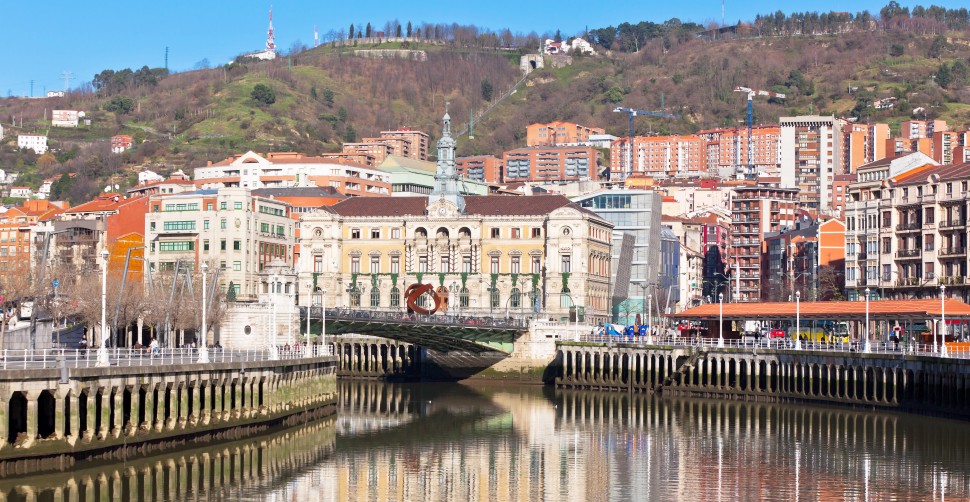 Vizcaya Bridge, Bilbao, Spain (dvoevnore/Bigstock.com)
Vizcaya Bridge, Bilbao, Spain (dvoevnore/Bigstock.com)
While Bilbao's industrial past does not absorb me as much as it does Brian, I certainly enjoyed the experience.
Casco Viejo (Old Town)
Back in the centre of the city it was time for an early evening meal. In Bilbao's charming old quarter – the Casco Viejo – we found a pavement eatery and poured over the menu. With a little help from the affable waiter, Brian ordered a lamb stew, while I opted for Idiazabal sheep's cheese. Both were superb, made more so by a glass or two of Basque sparkling wine.
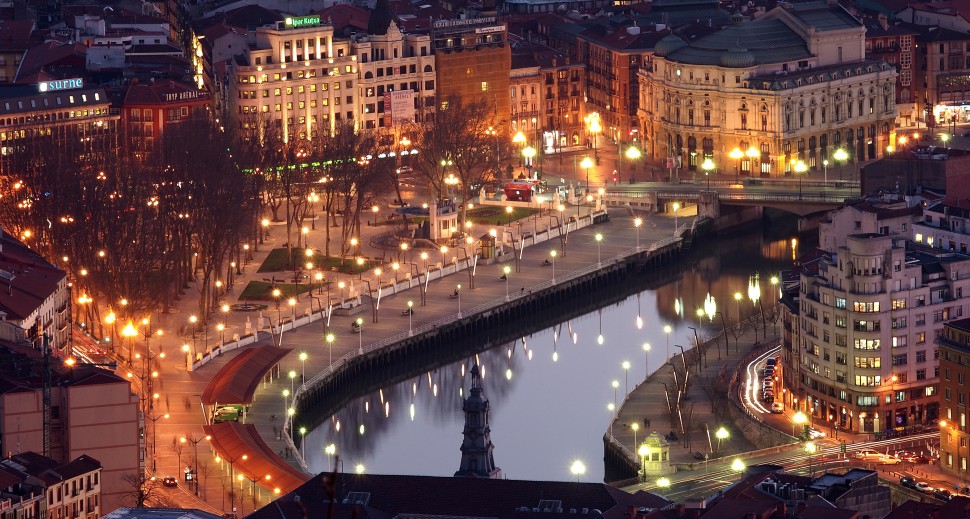 Bilbao, Spain (jarno/Bigstock.com)
Bilbao, Spain (jarno/Bigstock.com)
As darkness fell, we sauntered around the atmospheric old town, losing our way on several occasions – but happily so. We reflected on how well the Basque capital had regenerated after its post-industrial slump, spurred on largely by the gleaming Guggenheim and the wonderful new Metro system. In Bilbao, the old and the new sit side-by-side – perhaps more agreeably than in any other city we've visited.
Get a Quote